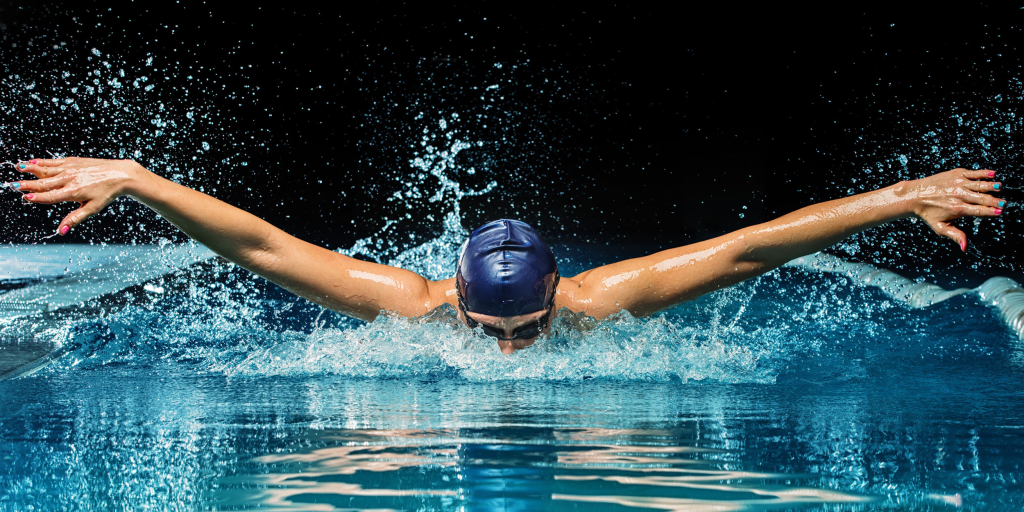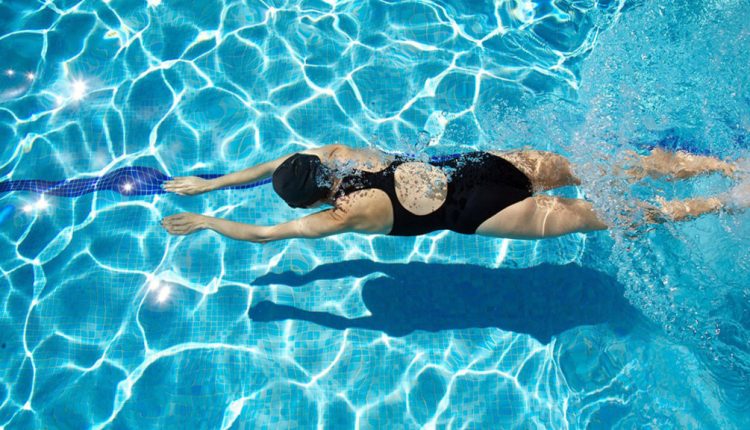Swimming is not only a refreshing activity but also an excellent form of exercise that engages multiple muscle groups, improves cardiovascular health, and increases endurance. However, to reap the full benefits and minimize the risk of injury, it’s essential to swim with proper technique. Whether you’re a beginner or looking to refine your skills, understanding the fundamentals of swimming can enhance your experience in the water. This article will guide you through the basics of swimming efficiently and safely.
Understanding the Four Main Strokes
1. Freestyle (Front Crawl)
Freestyle is the most common and fastest of the swimming strokes. It involves alternating arm movements and a flutter kick, with your body rotating slightly from side to side.
Technique Tips:
- Keep your body flat and streamline to reduce drag.
- Rotate your body with each stroke to extend your reach and improve propulsion.
- Use a relaxed flutter kick, originating from the hips.
- Breathe to the side in coordination with your strokes, turning your head just enough to take a breath.
2. Backstroke
Backstroke is unique as it’s the only stroke performed on the back, allowing for easy breathing. It shares similarities with freestyle in terms of the arm stroke and body rotation.
Technique Tips:
- Keep your body straight and lie on the water’s surface.
- Perform alternating circular arm movements, with one arm always above the water.
- Implement a steady flutter kick with your legs slightly submerged.
- Keep your head still, with your ears just below the water surface.
3. Breaststroke
Breaststroke is characterized by its frog-like kick and simultaneous arm movements. It’s a slower stroke that offers a great workout for the chest and legs.
Technique Tips:
- Start with your arms straight and hands together. Pull your arms apart in a circular motion, then push them forward again.
- Perform a frog kick: Bend your knees, then kick your legs out and back together in a circular motion.
- Coordinate the arm stroke and kick to maximize efficiency.
- Breathe at the end of each arm stroke by lifting your head above the water.
4. Butterfly
Butterfly is the most physically demanding stroke, known for its unique undulating movement and simultaneous arm action.
Technique Tips:
- Keep your body close to the water surface, moving in a wave-like motion.
- Perform simultaneous circular arm movements, pulling the water down and back.
- Use a dolphin kick, where both legs move together in an up-and-down motion.
- Coordinate your breath with the arm movements, breathing every one or two strokes.

General Swimming Tips
- Breathing: Mastering breathing techniques is crucial. Practice exhaling underwater and inhaling above the surface to maintain a consistent breathing pattern.
- Warm-Up and Cool Down: Always begin your swimming session with a warm-up to prepare your muscles and end with a cool-down to reduce soreness.
- Hydration: Even though you’re in the water, your body still sweats. Stay hydrated by drinking water before and after your swim.
- Safety First: Never swim alone, especially in open water. Be aware of your surroundings and follow pool rules and lifeguard instructions.
- Equipment: Utilize swimming aids such as goggles to protect your eyes, caps to keep your hair out of the way, and earplugs if you’re prone to ear infections.
Swimming is a comprehensive exercise that benefits the body and mind. By focusing on the proper techniques of the four main strokes, swimmers of all levels can improve their efficiency, speed, and safety in the water. Remember, like any skill, swimming requires practice and patience. Consider taking lessons from a qualified instructor if you’re new to swimming or want to improve your technique. Happy swimming!
- Advertisement -

